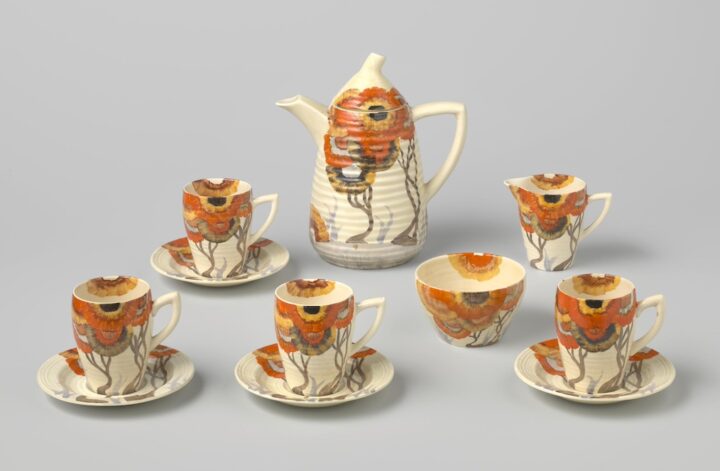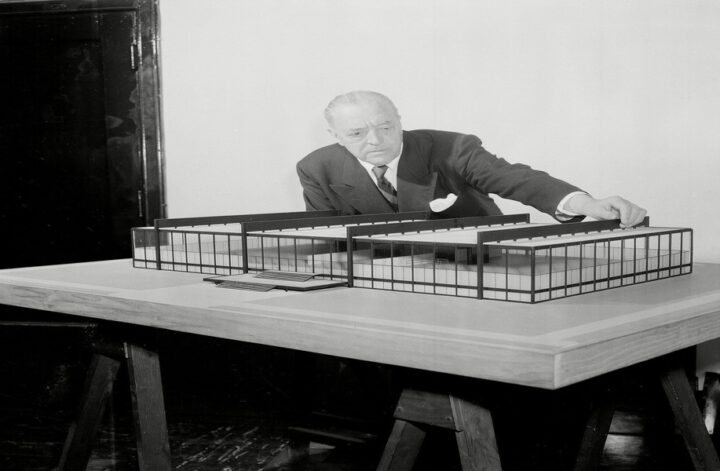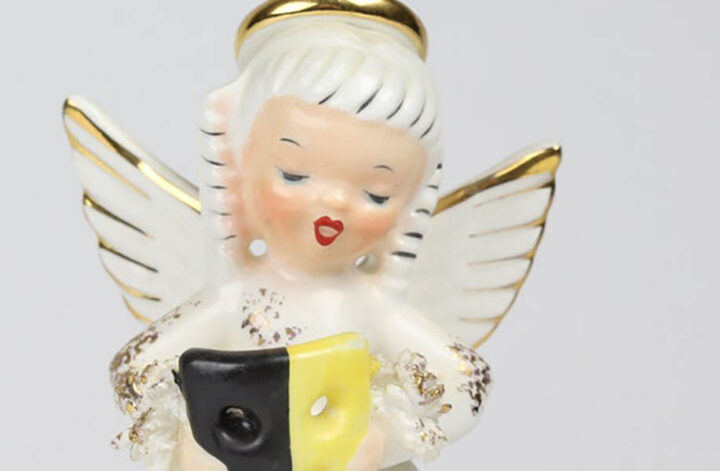If you’ve never heard of Clarice Cliff, you’re not alone and most likely not British. Although, if you enjoy early 20th century pottery, bright fun colors and patterns, she’s your gal.
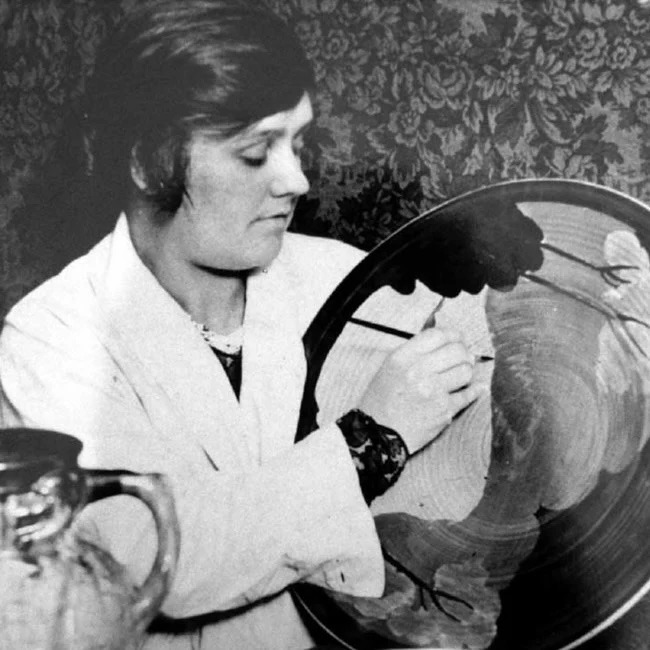
Born in 1899 in Tunstall, Stoke-on-Trent, England, she began painting ceramics at the age of 13. Yes, she was quite young, no there were no labor laws then. Stoke-on-Trent was a hub of ceramics and pottery at the time. By 1916, she had moved to the A.J. Wilkinson pottery, which allowed her to expand her work opportunities. During these years, she also studied at other local potteries. Seeing her talent, one of her bosses afforded the opportunity to attend art school in 1920.
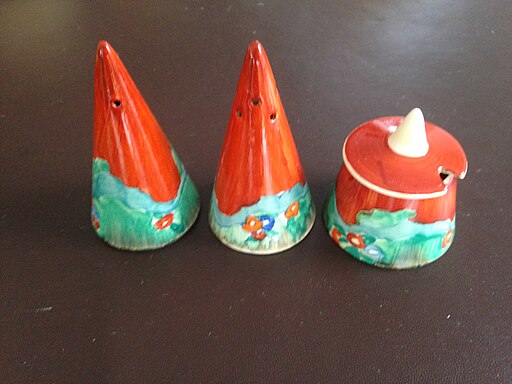
By 1927, recognizing her talent, her boss then gave her a studio of her own at Newport Pottery, which he had purchased in 1920. In 1927, she also launched her first line of decorative wares known as “Bizarre,” featuring bright colors and geometric designs. It was a hit, and by 1930, she had 20 women working under her, painting her designs on various ceramic items. Her Bizarre ware had expanded, and her first Bizarre pattern became known as “Original Bizarre,” with many variations to follow.
She created a new pattern in 1928, known as “Crocus,” which became so popular that by 1930 the workshop was working five and a half days a week on the design to keep up with demand. The pattern was all hand painted. In order to create it the pieces were turned upside down and the leaves were then painted between the flower petals.
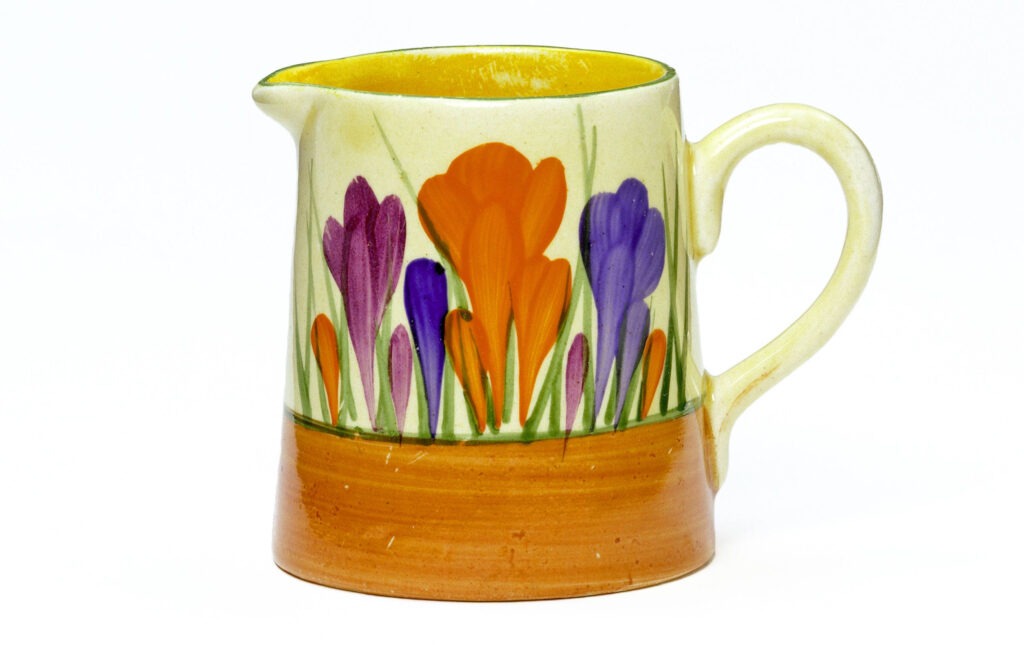
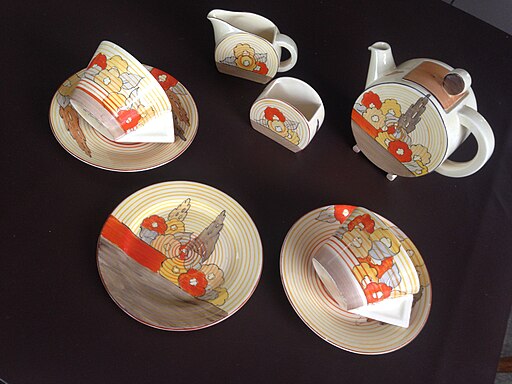
Art Deco design had overtaken the stuffy Victorian look as it was bright in color and simple in shape. Clarice’s patterns and designs fit right in. Her triangular shaped teapot and cup handles, along with her conical sugar casters were in high demand. She became the art director of Newport Pottery and A.J. Wilkerson in 1930. Her talent was not only in painting, but design as well. She created shapes not seen before in ceramic household goods. Along with the bold colors and patterns, her fun and often quirky designs remained popular throughout the Great Depression years despite their high cost.
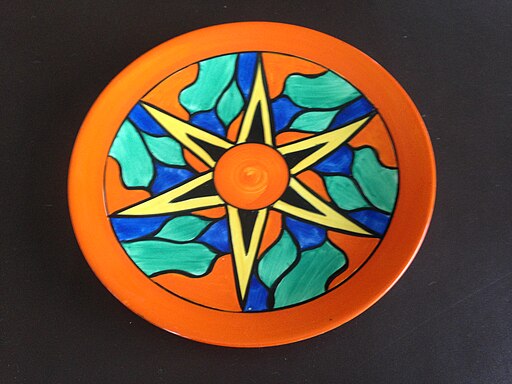
By the beginning of WWII, styles had changed and painted ware was no longer permitted to be produced. In 1940, Clarice married her long time boss Arthur Coley Austin Shorter after his first wife passed away. They had worked together closely for many years and had formed a strong bond. At that point, unable to continue producing her brightly colored wares, she retired to her home and tended to her large garden. Her designs continued to be sold through the factory until 1964, one year after her husband passed away. She sold the factory that year.
By the early 1970s, she had become a recluse, although unbeknownst to her, her wares were becoming popular amongst well heeled collectors. Enough interest in her garnered an exhibition of her wares in 1972. She offered notes on the catalog, but refused to attend the exhibition. She died October 23, 1972. Since her death, there have been many retrospectives of her work and several books written as well as a Clarice Cliff Collectors Club founded in 1982. The Metropolitan Museum of Art as well as the Victoria and Albert Museum both have Clarice Cliff galleries. The CCCC also maintains a website. You can see examples of her work at the V & A here. Invaluable also has a page dedicated to Clarice Cliff with some history and photos here.
![]()

